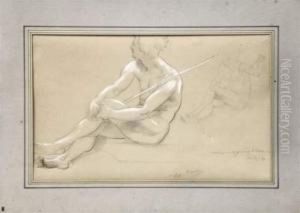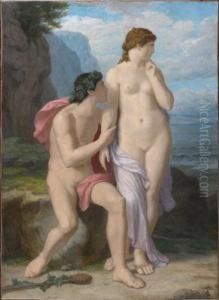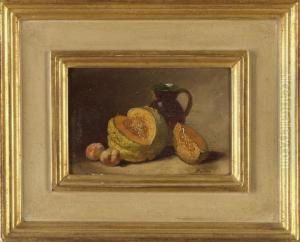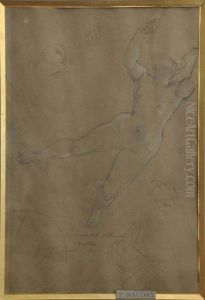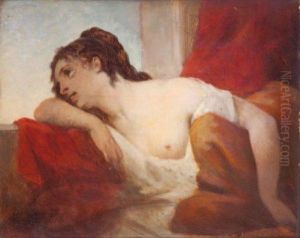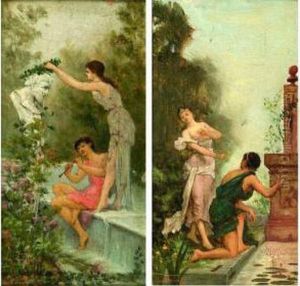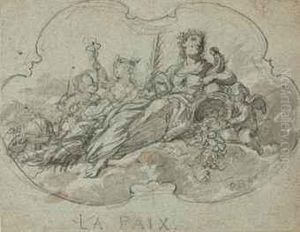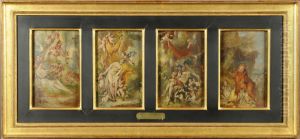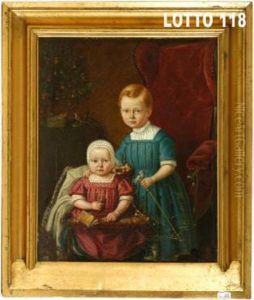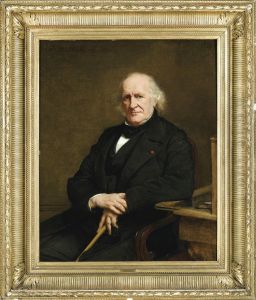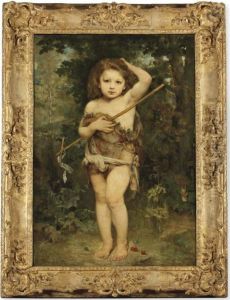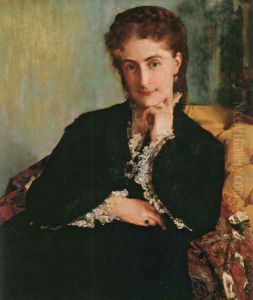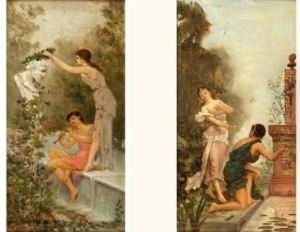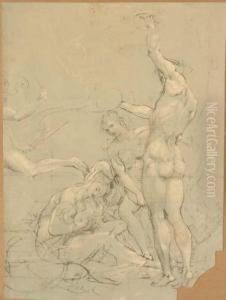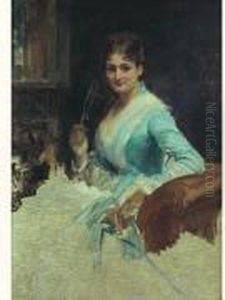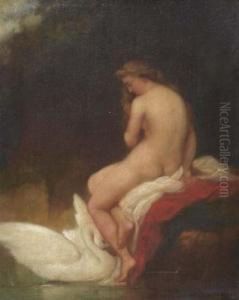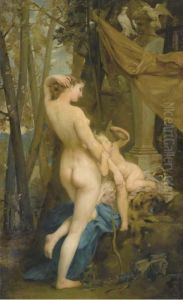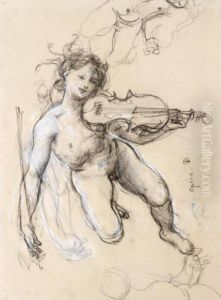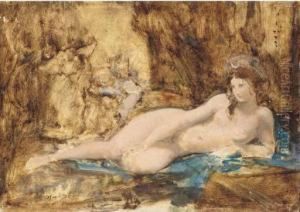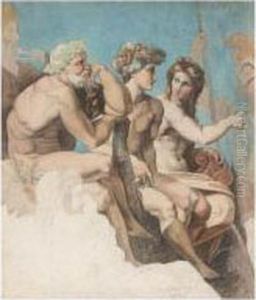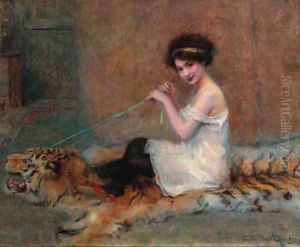Baudry Paul Paintings
Paul Baudry was a French painter, born in La Roche-sur-Yon, Vendée on November 7, 1828. He was known for his classical and academic style of painting. Baudry's early education was modest; however, his talent for art was recognized early on, and he was sent to study at the École des Beaux-Arts in Paris under the tutelage of Michel Martin Drolling. His skill and academic approach to painting allowed him to win the prestigious Prix de Rome in 1850, which provided him with the opportunity to study in Rome for a period of time.
While in Rome, Baudry was heavily influenced by the works of the Italian Renaissance, particularly by the paintings of Raphael. He developed a style characterized by clear composition, precise draftsmanship, and a penchant for mythological and allegorical subjects. After his return to France, he received numerous commissions for religious and historical paintings, as well as decorative works for public buildings.
One of Baudry's most notable commissions was the decoration of the grand staircase of the Paris Opéra, completed in the 1870s. This project solidified his reputation as one of the leading muralists of his time. The Opéra's staircase ceiling features lavish allegorical scenes that celebrate music and the performing arts, displaying Baudry's skill in handling large-scale compositions.
Baudry's work was well-received, and he was awarded the Legion of Honor in 1861. Throughout his career, he exhibited at the Paris Salon, where he received critical acclaim and public recognition. His portraits were also highly regarded, and he painted many notable figures of his time.
Paul Baudry's health began to deteriorate in the early 1880s, and he eventually died on January 17, 1886, in Paris. His legacy is marked by his contributions to the academic tradition and his role in the decoration of important public buildings in France. Today, his works can be found in museums and collections around the world, illustrating the enduring appeal of his refined and classical approach to painting.


